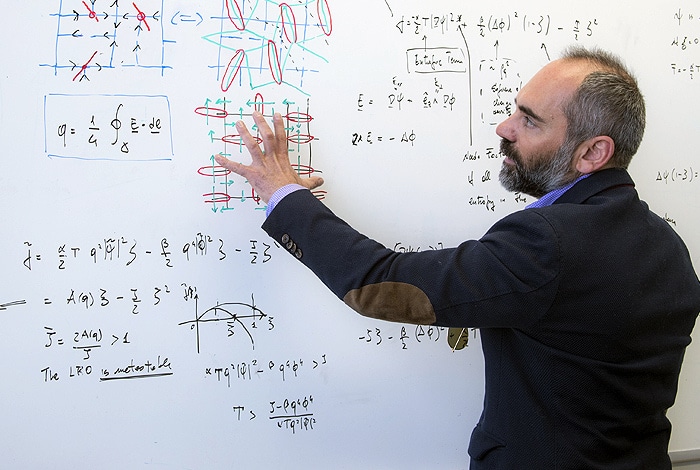Apr 3 2018
A new state of matter with a structural order that functions according to rules more in tandem with quantum mechanics than standard thermodynamic theory has been identified by physicists. A classical material known as artificial spin ice, which in specific phases seems to be disordered, is actually ordered, however in a “topological” form.
 Cristiano Nisoli (Image credit: Los Alamos National Laboratory)
Cristiano Nisoli (Image credit: Los Alamos National Laboratory)
“Our research shows for the first time that classical systems such as artificial spin ice can be designed to demonstrate topological ordered phases, which previously have been found only in quantum conditions,” stated Cristiano Nisoli, Los Alamos National Laboratory physicist, who is the leader of the theoretical group that partnered with an experimental group at the University of Illinois at Urbana-Champaign, headed by Peter Schiffer (now at Yale University).
In general, physicists categorize the phases of matter as ordered (for example, crystal) and disordered (for example, gases), and they do this based on the symmetry of such order, stated Nisoli.
The demonstration that these topological effects can be designed into an artificial spin ice system opens the door to a wide range of possible new studies.
Peter Schiffer
Specialized Material Maintained Puzzling Energy Levels in Experiments
As part of the new study, the researchers investigated specific artificial spin ice geometry, known as Shakti spin ice. Although these materials are designed theoretically, at present, the unearthing of its out-of-equilibrium, exotic characteristics progressed from experiments to theory.
Schiffer and his colleagues carried out photoemission electron microscopy characterization at the U.S. Department of Energy’s Advanced Light Source at Lawrence Berkeley National Laboratory and revealed something obscure: In contrast to other artificial spin ices, which might attain their low-energy state when temperature is decreased in consecutive quenches, Shakti spin ice persistently remained at around the same energy level. “The system gets stuck in a way that it cannot rearrange itself, even though a large-scale rearrangement would allow it to fall to a lower energy state,” stated Schiffer.
Obviously, something was being preserved; however, nothing seemed to be an evident candidate in a material artificially designed to offer a disordered spin picture.
Backing Off to See the Big Picture
Departing from a spin picture to focus on an emergent portrayal of the excitations of the system, Nisoli depicted a low-energy state that can be mapped precisely into a renowned theoretical model, the “dimer cover model,” whose topological characteristics had been identified earlier. Subsequently, experimental data confirmed topological charge conservation and hence a longer life of the excitations.
I find it most intriguing because usually theoretical frameworks move from classical physics to quantum physics. Not so with topological order.
Cristiano Nisoli
Collaborative Success
Schiffer’s and his colleagues carried out physical experiments at the University of Illinois at Urbana-Champaign, funded by the U.S. Department of Energy’s Office of Science. The material’s kinetics was analyzed in real space and real time at the Advanced Light Source.
A Laboratory Directed Research and Development (LDRD) grant from Los Alamos National Laboratory funded the theoretical study of Nisoli. LDRD funded Caravelli’s study through the Oppenheimer Distinguished Fellowship at Los Alamos.